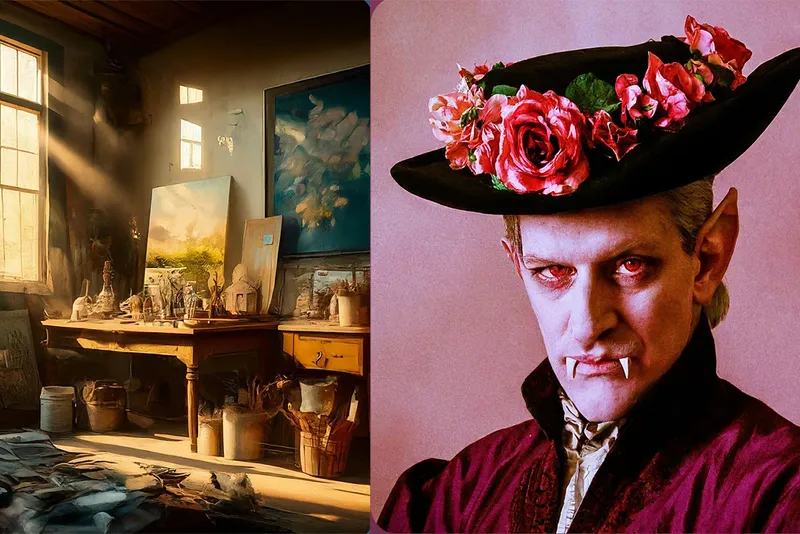When it comes to artificial intelligence, Google is a bit late. Despite OpenAI’s revolutionary Dall-E AI art image generator originally launching two years ago, Google has only just now released a competitor.
Known as ImageFX, the software is backed by one of the world’s biggest tech companies and an overwhelming amount of data, so how does it stack up?
In short: ImageFX has been producing some incredible images, rivalling the best out there. But how does it work? Can you access it right now? And has it managed to resolve some of the major issues that plague the world of AI art?
How to use Google ImageFX
Google ImageFX is currently available to use in countries including the US, Kenya, New Zealand and Australia.
If you try and visit the site in nations such as the UK you’ll be greeted by a big ‘This tool isn’t available in your country yet’ warning.
To access it from one of the currently available countries, head over to Google’s AI test Kitchen and make an account. Once you’re all set up, you’ll be able to get going with your new prompts.
If you’re not in one of the countries mentioned above, it is still worth heading to the website. Google lets you sign up for notifications for when the platform will become available where you live.
How good is Google ImageFX?
Google is late to the game, there’s no doubt about that. OpenAI’s Dall-E was first released back in January 2021 and Midjourney came a year after. So has Google’s delay paid off in terms of quality?

So far, images that have been released show that ImageFX is capable of producing content at a very high level. Detailed, and with an understanding of context, ImageFX is unsurprisingly a competent image generator.
However, it really should be. AI art has come a long way over the years and Google’s biggest competitors are producing just as high-quality work, and have been doing so for much longer.
Right now, the big benefit of ImageFX is that it is free (if you live in the right country). Midjourney and Dall-E are both mostly hidden behind paywalls or restricted services so ImageFX is worth making the most of before that changes.
ImageFX has also included a unique feature dubbed ‘expressive chips’. This allows users to quickly edit a prompt to try something different with their search. For example, if you’ve asked for a portrait of a woman, this can quickly be switched to be abstract, or hand drawn or even an oil painting.
How does it work?
Essentially, Google ImageFX works exactly the same as all other AI art generators. That means a couple of steps, starting with obtaining a large enough database of images to train off.
While Google hasn’t stated publicly where its training data comes from, it is likely a combination of internal sources, collaborations with organisations and research institutions and, potentially web scraping and user-generated content.
Once the database has been built up, the model is trained on these images, learning the relationships between words and visual concepts in images, most likely through a diffusion model.
These models start with random noise in an image and refine it, guided by the information from both the data and the textual descriptions that come with them. This is done over and over again, essentially learning the relationships between words, images and context.
With this training it can understand what words are associated with an image, allowing ImageFX, and any AI image generator for that matter, to understand the prompt that it is being asked.
How is it linked to Google Bard?
Google Bard is arguably the biggest competition to AI chatbot ChatGPT. Google has been working on its chatbot in secret for a while but publicly launched it back in 2023.
If ImageFX is the pictures, Bard is the words and contextual understanding. The goal is to then combine these two to create the ultimate AI model. This is the same as OpenAI’s aim to combine ChatGPT with Dall-E (OpenAI’s image generator).
Currently, Google Bard is in a testing period but soon it will be available to use in its full form, backed by the recently announced Google Gemini system.
This in theory could mean a platform where you could ask a model to create a board game for you, returning both the rules and lore, as well as all of the images, board and content. Or alternatively, write a series of books with illustrations to go along with it.
Will ImageFX produce inappropriate images?
AI art has a problem… people. Trained on artwork from the human population, and then utilised again by humans, there is a tendency for the less appropriate parts of the human brain to make their way in.
Previous AI art generators have displayed sexism, prejudice, and occasionally intense graphic images. This is a problem all of the big tech companies are looking to challenge, including Google with ImageFX.
“All images generated with imageFX are marked by SynthID, a tool developed by Google DeepMind that adds a digital watermark directly in the content that we generate,” Google has stated.
“SynthID watermarks are imperceptible to the human eye but are detectable for identification. In addition, all images include metadata, giving people more information when they encounter our AI-generated images.”
Along with this, Google has stated that they have made improvements to the training data safety, reducing problematic outputs like violent, offensive or sexually explicit content. This extends to reducing the ability to create images of real people.
Read more:
